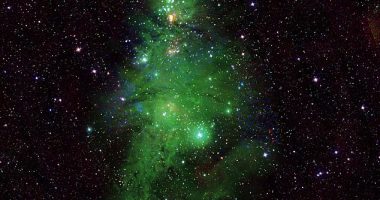A RARE comet will enter our inner solar system this month – here’s how you can see it.
Astronomy lovers may get to see one of the largest known comets shoot past the night sky on the evening of July 14.
Designated C/2017 K2, this comet will be shooting into our inner solar system at a speed of around 615 km/sec.
However, even at its nearest point to Earth, it will still be far away enough that you will likely need a telescope to see it.
Comet C/2017 K2
C/2017 K2, one of the largest comets we’ve ever observed, was discovered in May 2017 by the Pan-STARRS survey instrument based in Hawaii.


It was around 2.4 billion km from the Sun at that point – though K2 has been travelling for millions of years from its home in the Oort Cloud.
The Oort Cloud is a region at the edge of our solar system that contains hundreds of billions of comets.
Nasa has revealed that K2’s tail is between 81,000 and 500,000 miles wide – that’s the size of between one to six Jupiters.
Since July 2007, the comet has been in the constellation of Draco, around 309 light-years from Earth.
Most read in Tech
What is a comet?
Comets are “cosmic snowballs of frozen gases, rock and dust”, according to Nasa.
They’re made of leftovers from the formation of the solar system.
When a comet approaches the Sun, it forms a “tail” made of gas and dust particles that face away from the large star.
How to view the comet
Your best bet to see K2 in action is to watch it online via public observatories, like the Virtual Telescope Project.
Nasa’s website might share the comet’s orbit as well.
If you are an amateur astronomer and own a small telescope, you might be able to view it on your own.
It’s best to see it on July 14 – however, the comet will still be visible until September in the Northern Hemisphere.
After Mid-September, the comet will move to the hemisphere’s southwestern horizon.


It’s important to note that if you are interested in seeing K2, then 2022 is the only year this is possible.
This is due to the comet’s long orbit – which means it won’t approach Earth again for a few million years.
This post first appeared on Thesun.co.uk










